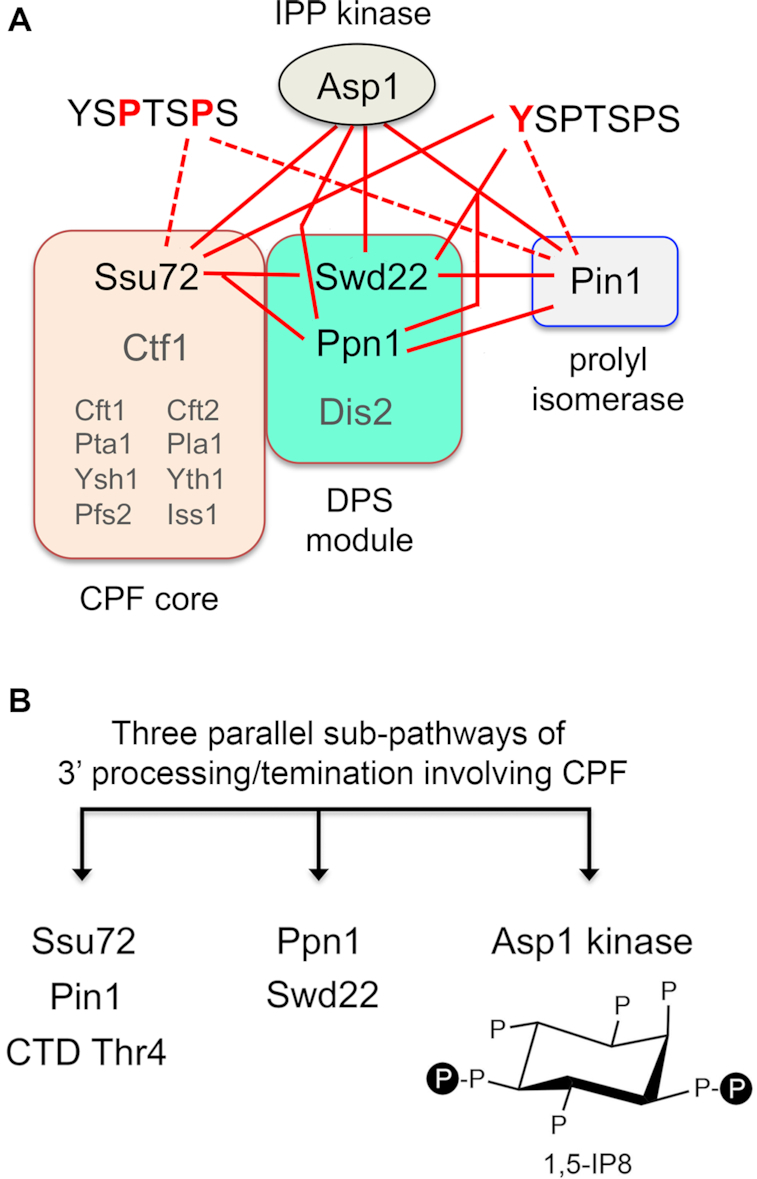Figure 12.

Synthetic genetic interactions of Pin1 with CPF, Asp1, and Pol2 CTD accord with those of Ssu72 and suggest three parallel sub-pathways of 3′ processing/termination via CPF. (A) The fission yeast CPF complex promotes 3′ processing and termination directed by poly(A) signals. CPF consist of a 10-subunit core (comprising 8 essential subunits in small font and two inessential subunits—Ssu72 and Ctf1—in large font) and a 3-subunit DPS module as shown. Pairwise synthetic lethalities of null or active site mutations in the CPF subunits Ssu72, Ppn1 and Swd22 with each other, with a null mutant of the Pin1 peptidyl prolyl isomerase, and with a deletion or IPP kinase-dead mutant of Asp1 (resulting in absence of IP8) are indicated by solid red lines. Also shown are synthetic lethalities (solid red lines) or severe synthetic sickness (dashed red lines) with mutations of Pol2 CTD YSPTSPS heptads at positions Tyr1 (depicted at right) or Pro3 and Pro6 (at left). (B) Three parallel sub-pathways. Inactivating mutations of the components of one sub-pathway are synthetically lethal with mutations in components of the other sub-pathway, but not with mutations of factors in the same sub-pathway. S. pombe viability depends on any two of the three sub-pathways being intact. With respect to PHO gene regulation, mutations in any one of the three sub-pathways result in pho1 hyper-repression in phosphate-replete cells.
